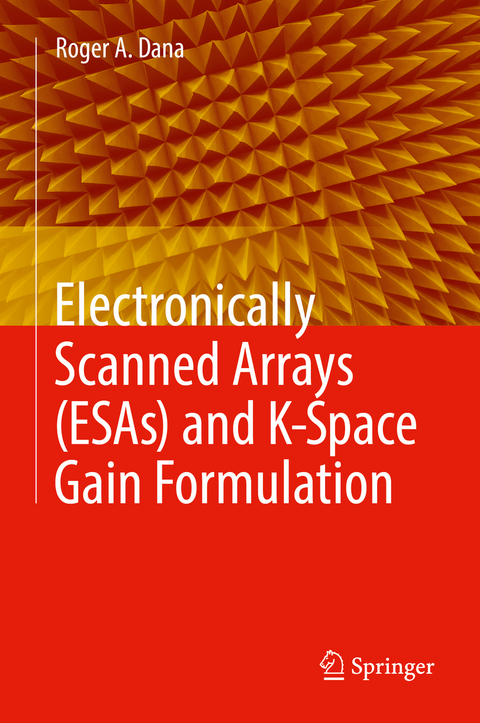
Electronically Scanned Arrays (ESAs) and K-Space Gain Formulation
Springer International Publishing (Verlag)
978-3-030-04677-4 (ISBN)
This book fills in details that are often left out of modern books on the theory of antennas. The starting point is a discussion of some general principles that apply to all electronic systems and to antennas in particular. Just as time domain functions can be expanded in terms of sine waves using Fourier transforms, spatial domain functions can be expanded in terms of plane waves also using Fourier transforms, and K-space gain is the spatial Fourier transform of the aperture weighting function. Other topics discussed include the Discrete Fourier Transform (DFT) formulation of antenna gain and what is missing in this formulation, the effect of sky temperature on the often specified G/T ratio of antennas, sidelobe control using conventional and novel techniques, and ESA digital beamforming versus adaptive processing to limit interference.
Presents content the author derived when first asked to evaluate the performance of an electronically scanned array under designwith manufacturing imperfections and design limitations;
Enables readers to understand the firm theoretical foundation of antenna gain even when they must start from well-known formulations rather than first principles;
Explains in a straightforward manner the relationship between antenna gain and aperture area;
Discusses the relationship between sidelobe control algorithms and aperture shape, how to take advantage of it, and what the penalties are;
Shows the equivalence of Minimum-Variance, Distortionless Response (MVDR) and Space-Time Adaptive Processing (STAP) and how these algorithms can be used with ESA subarrays to mitigate interference.
Roger A Dana received a Ph.D. in astrophysics from Stanford University. Afterwards he worked for 3 years at Hughes Aircraft Company Ground Systems Group where he learned about radar and decibels. The next 24 years were at Mission Research Corporation where he worked on trans-ionospheric RF propagation, channel models, and mitigation techniques for comm, nav, and radar systems. For the last 14 years he has been at the Advanced Technology Center of Rockwell Collins working on problems at the intersection of physics, mathematics, and electronic systems.
Introduction.- Basic Principles of RF Electronic Systems and Antennas.- K-Space Gain.- Effect of Sky Noise on Antenna Temperature.- Sidelobe Control and Monopulse Weighting.- Digital Beamforming and Adaptive Processing.
| Erscheinungsdatum | 16.02.2019 |
|---|---|
| Zusatzinfo | VIII, 113 p. 48 illus., 20 illus. in color. |
| Verlagsort | Cham |
| Sprache | englisch |
| Maße | 155 x 235 mm |
| Gewicht | 356 g |
| Themenwelt | Mathematik / Informatik ► Informatik |
| Technik ► Elektrotechnik / Energietechnik | |
| Schlagworte | Antenna gain • digital beamforming • Phase Array Antenna • RF Antennas and Circuits • RF Electronic Systems and Antennas |
| ISBN-10 | 3-030-04677-X / 303004677X |
| ISBN-13 | 978-3-030-04677-4 / 9783030046774 |
| Zustand | Neuware |
| Haben Sie eine Frage zum Produkt? |
aus dem Bereich


